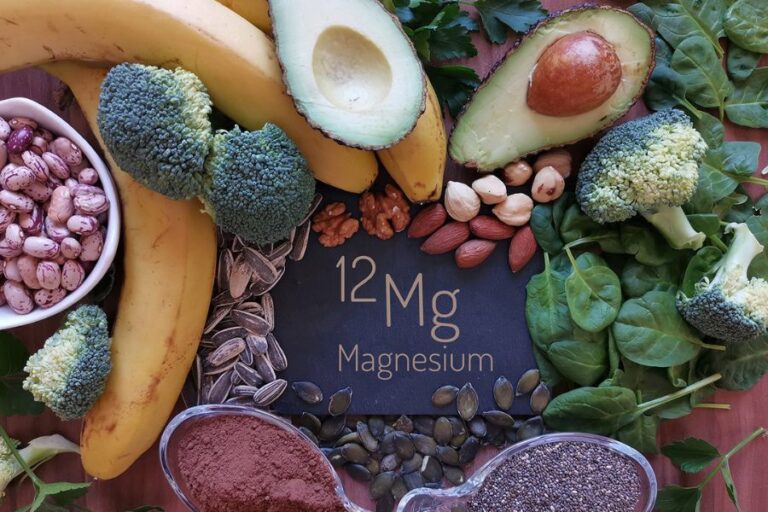Magnesium is an essential mineral that plays a critical role in maintaining health. It participates in hundreds of biochemical reactions in the body, many of which are necessary for survival. Although magnesium supports numerous systems—from muscle and nerve function to cardiovascular health—its most important role lies in its function as a cofactor for enzymes. In other words, magnesium helps drive the chemical reactions that keep the body functioning properly. This article focuses on that central role and how it impacts various aspects of human health.
Magnesium as an Enzymatic Cofactor
Magnesium’s most essential function is serving as a cofactor for more than 300 enzyme systems. Enzymes are proteins that speed up chemical reactions in the body, and many of them can’t function without magnesium. These enzymes are responsible for processes like muscle contractions, nerve signaling, protein synthesis, and most importantly, energy production.
One of magnesium’s key contributions is in adenosine triphosphate (ATP) metabolism. ATP is the body’s main energy currency, and it must bind to magnesium to become biologically active. Without magnesium, ATP cannot power the many cellular functions required for movement, repair, and growth. This makes magnesium vital to the body’s ability to generate and use energy efficiently.
Muscle and Nerve Function
Magnesium plays a direct role in how muscles and nerves operate. It helps regulate the flow of calcium and potassium in and out of cells—an essential process for muscle contractions and nerve impulses. Without enough magnesium, muscles may contract too frequently or not relax properly, leading to cramps, spasms, or twitching.
In the nervous system, magnesium helps maintain a balance between excitatory and calming signals. It binds to receptors that help prevent overstimulation of nerve cells. This function contributes to a stable mood, proper reflexes, and a healthy stress response. Magnesium also supports the release of neurotransmitters, which are the brain’s chemical messengers.

Bone Health and Structure
While calcium often takes the spotlight for bone health, magnesium plays an equally important role. About 60% of the body’s total magnesium is stored in the bones, where it helps build and maintain their strength. Magnesium supports bone mineralization, a process that keeps bones dense and less prone to fractures.
Magnesium also works with calcium and vitamin D to regulate bone metabolism. It helps control the levels of parathyroid hormone (PTH), which influences calcium balance in the blood and bones. Without enough magnesium, the body may struggle to use calcium effectively, which can weaken bones over time and increase the risk of osteoporosis.
Cardiovascular Support
Magnesium plays a critical role in maintaining a healthy cardiovascular system. It helps regulate heart rhythm by supporting the proper flow of electrolytes like potassium and calcium in heart muscle cells. This balance is essential for a steady heartbeat and helps prevent arrhythmias.
Magnesium also assists in controlling blood pressure. It supports the relaxation of blood vessels, which improves circulation and reduces strain on the heart. Several studies have linked higher magnesium intake with lower risk of hypertension and heart disease. Because of these effects, magnesium is considered important for long-term heart health.
Metabolism and Genetic Maintenance
Magnesium supports several key processes involved in metabolism. It helps the body break down carbohydrates, fats, and proteins to produce usable energy. Many enzymes that regulate glucose and insulin function depend on magnesium, which makes it important for blood sugar control and metabolic balance.
Beyond metabolism, magnesium also contributes to genetic maintenance. It plays a role in the synthesis of DNA and RNA—molecules that store and transmit genetic information. Magnesium stabilizes these structures and assists in repairing damaged DNA. This function supports healthy cell division, growth, and immune response.

Recommended Intake and Dietary Sources
The recommended daily intake of magnesium varies by age, sex, and life stage. For most adult men, the target is around 400–420 mg per day. For adult women, the recommended amount is typically 310–320 mg per day, with increased needs during pregnancy and breastfeeding.
Magnesium is found in many whole foods, especially plant-based options. Common dietary sources include:
- Leafy greens like spinach and Swiss chard
- Nuts and seeds such as almonds, cashews, and pumpkin seeds
- Whole grains like brown rice and quinoa
- Legumes including black beans and lentils
- Avocados and bananas
Magnesium deficiency is relatively common, especially in people with poor diets, gastrointestinal conditions, or high stress levels. Signs of low magnesium may include fatigue, muscle cramps, irregular heartbeat, and difficulty sleeping.
Conclusion
Magnesium serves many important roles in the body, but its primary function is acting as a cofactor for hundreds of enzymes. These enzymes support processes ranging from energy production and muscle function to blood pressure regulation and DNA repair. Without enough magnesium, these systems cannot operate efficiently.
Getting adequate magnesium from food or supplements helps maintain overall health and prevents a range of issues—from muscle cramps to metabolic disturbances. Focusing on magnesium-rich foods and meeting daily intake recommendations is a simple but effective way to support essential body functions.
Frequently Asked Questions (FAQs)
1. What is magnesium most commonly used for in the body?
Magnesium is most commonly used as a cofactor for over 300 enzyme systems. These enzymes are involved in critical functions such as energy production, muscle contraction, nerve signaling, and maintaining heart rhythm.
2. How do I know if I’m deficient in magnesium?
Common signs of magnesium deficiency include muscle cramps, fatigue, irregular heartbeat, poor sleep, and anxiety. Blood tests can confirm low levels, though symptoms often appear before deficiencies show up in lab work.
3. What foods are high in magnesium?
Foods rich in magnesium include leafy greens (like spinach), nuts (especially almonds and cashews), seeds (such as pumpkin seeds), legumes, whole grains, bananas, and avocados.
4. Can I get enough magnesium through diet alone?
Many people can meet their magnesium needs through a balanced diet. However, some may require supplements due to medical conditions, medication use, or dietary restrictions.
5. Is it safe to take magnesium supplements daily?
For most people, daily magnesium supplements are safe when taken within recommended limits. The tolerable upper intake level for supplemental magnesium is 350 mg per day for adults. Always check with a healthcare provider before starting a supplement.
6. Does magnesium help with sleep and anxiety?
Yes, magnesium can help calm the nervous system by regulating neurotransmitters. It’s often used to support better sleep quality and reduce symptoms of stress and anxiety.
7. Which form of magnesium is best?
The best form depends on your needs. Magnesium glycinate is known for being gentle on the stomach and helpful for relaxation. Magnesium citrate supports digestion, while magnesium oxide is commonly used for relieving constipation.
References
- Polesel-Maris, J. (2015). Magnesium: Biomedical and nutritional importance. JOM, 67(11), 2533–2539.
- Wacker, W. E. C., & Parisi, A. F. (1968). Magnesium metabolism. The American Journal of Digestive Diseases, 13, 619–649.
- Whittem, T. (2002). Magnesium disorders in veterinary patients. Australian Veterinary Journal, 80(8), 502–507.
- Rude, R. K. (1992). Magnesium deficiency: A cause of heterogeneous disease in humans. Journal of the American College of Nutrition, 11(5), 577–585.
- Shechter, M. (2003). Magnesium and cardiovascular system. Heart, 89(6), 651–656.
- Luthringer, B. J., Amin Yavari, S., van Lenthe, G. H., & Eglin, D. (2019). Magnesium-based implants: Degradation, mechanical integrity, and bone interaction in vivo. Journal of Materials Science, 54, 8071–8091.
- Zeng, R. C., Zhang, J., Huang, W. J., Dietzel, W., Kainer, K. U., Blawert, C., & Yan, Y. C. (2017). Review of studies on corrosion of magnesium alloys in simulated physiological environments. Transactions of Nonferrous Metals Society of China, 27(6), 1362–1374.
- Agus, Z. S. (2008). Hypomagnesemia. Clinical Kidney Journal, 5(Suppl 1), i3–i14.
- Vormann, J. (2002). Magnesium: Nutrition and metabolism. Molecular Aspects of Medicine, 24(1–3), 27–37.









